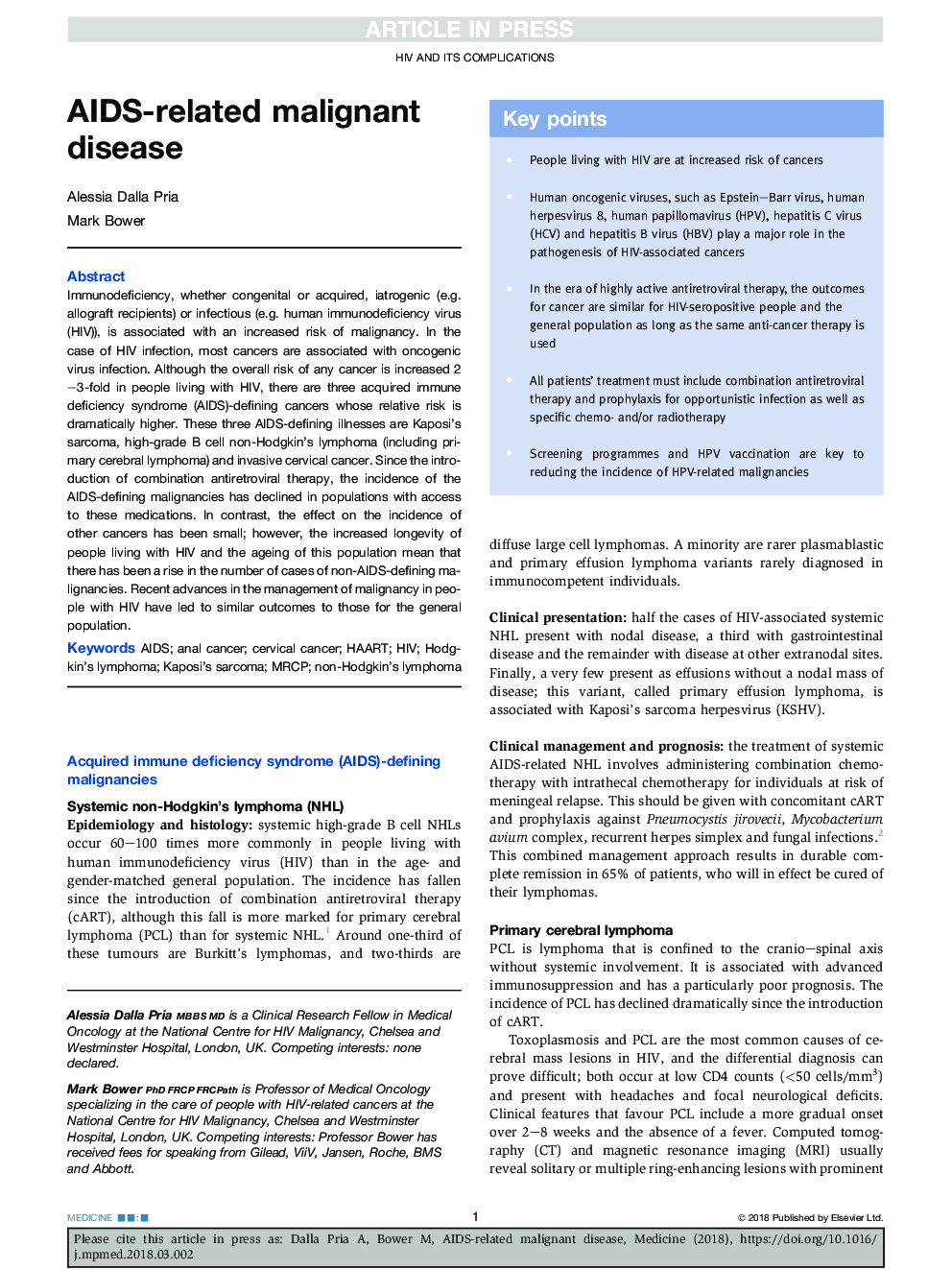| Article ID | Journal | Published Year | Pages | File Type |
|---|---|---|---|---|
| 8764017 | Medicine | 2018 | 5 Pages |
Abstract
Immunodeficiency, whether congenital or acquired, iatrogenic (e.g. allograft recipients) or infectious (e.g. human immunodeficiency virus (HIV)), is associated with an increased risk of malignancy. In the case of HIV infection, most cancers are associated with oncogenic virus infection. Although the overall risk of any cancer is increased 2-3-fold in people living with HIV, there are three acquired immune deficiency syndrome (AIDS)-defining cancers whose relative risk is dramatically higher. These three AIDS-defining illnesses are Kaposi's sarcoma, high-grade B cell non-Hodgkin's lymphoma (including primary cerebral lymphoma) and invasive cervical cancer. Since the introduction of combination antiretroviral therapy, the incidence of the AIDS-defining malignancies has declined in populations with access to these medications. In contrast, the effect on the incidence of other cancers has been small; however, the increased longevity of people living with HIV and the ageing of this population mean that there has been a rise in the number of cases of non-AIDS-defining malignancies. Recent advances in the management of malignancy in people with HIV have led to similar outcomes to those for the general population.
Keywords
Related Topics
Health Sciences
Medicine and Dentistry
Medicine and Dentistry (General)
Authors
Alessia Dalla Pria, Mark Bower,
